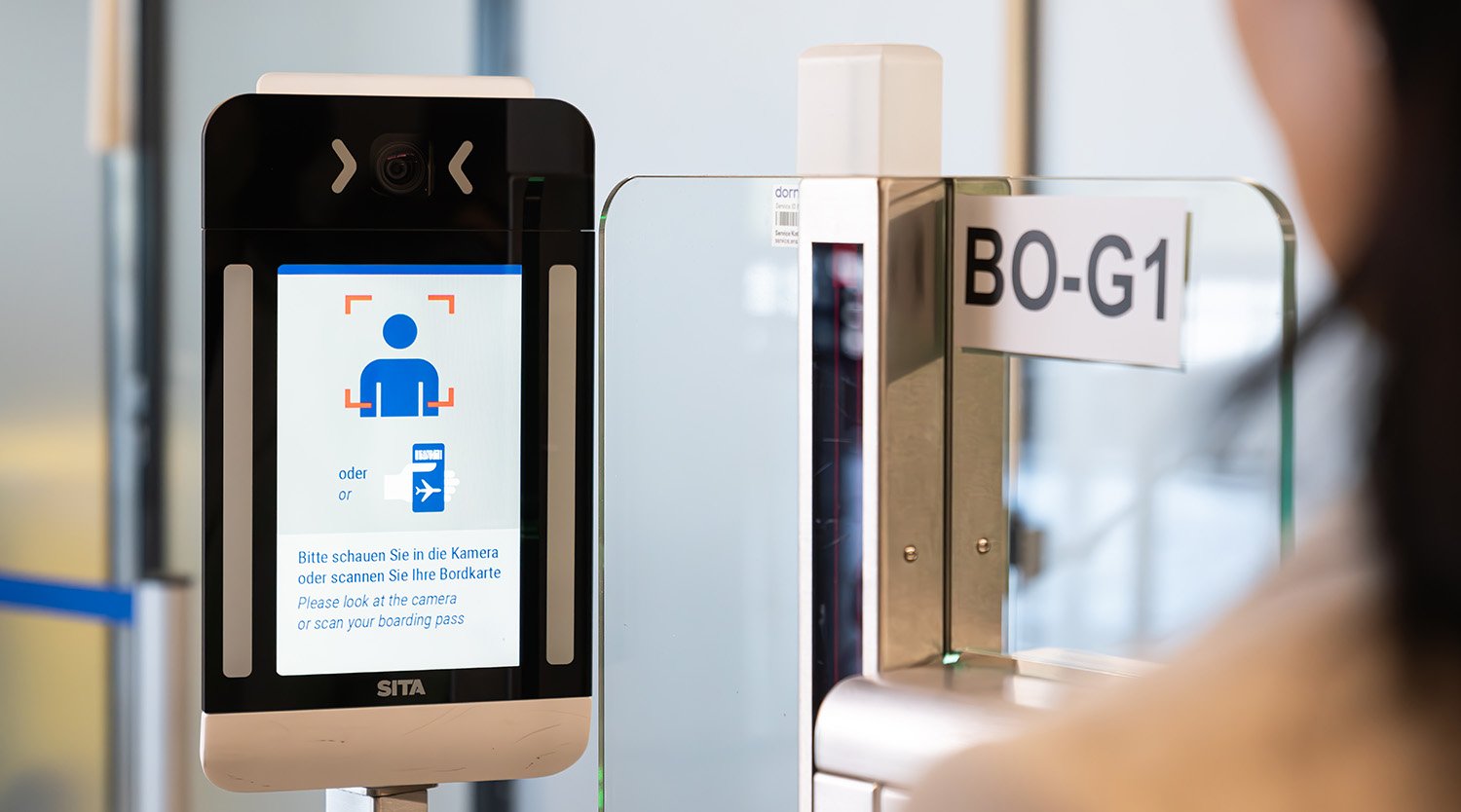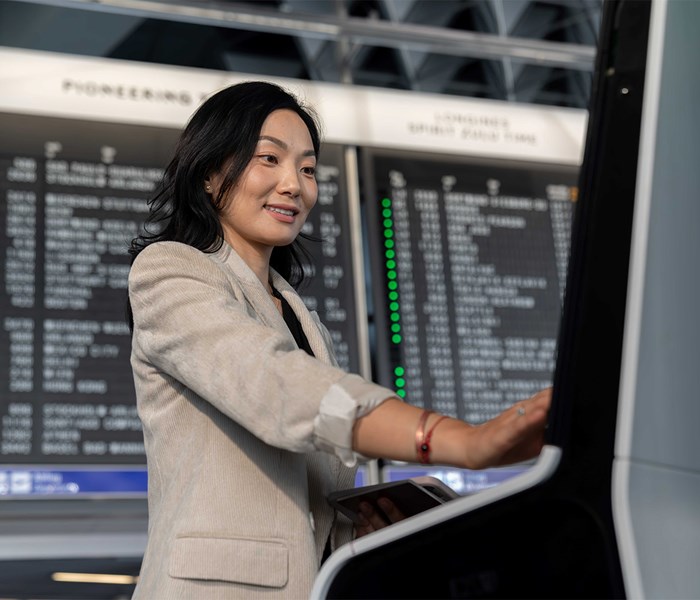The Airport
Frankfurt Airport is an international hub strategically located in the heart of Europe at the junction of vital intermodal road, rail, and air networks. It ranks as Europe’s fifth busiest airport by passenger volume and first for cargo. As it recovers to pre-pandemic traffic levels, the airport welcomed 44.5 million passengers from January to September 2023, reaching 82% of 2019 levels, when it welcomed more than 70.5 million passengers and handled 2.1 million metric tons of cargo.
The Challenge
With large volumes of passengers transiting through the airport every day, Fraport has to manage potential bottlenecks at various points in the passenger journey to avoid delays and impacting the passenger experience. Frankfurt Airport needed quick and seamless touchpoints – from check-in to boarding – to maintain a steady and smooth flow of passengers.
With limited space available, expanding the physical footprint was not an option. The airport also needed this solution to be scalable as it anticipates continued growth in passenger traffic.
Fraport was also clear that they wanted a common use solution. “Frankfurt serves more than 90 airlines. We can’t provide one solution for one airline and something else for another. It makes no sense. That was the task given in 2019 by our executive team: go common use,” says Jen Sanner, Program Director, Biometrics at Fraport.
On top of the list of requirements was the customer experience. It needed to be digital, fast and highly efficient.
The Solution
Using SITA’s Smart Path biometric solution, Fraport is enabling all airlines at Frankfurt Airport to jointly use face biometrics as identification from check-in to boarding the aircraft. It is the first airport in Europe to offer biometric touchpoints to all airline passengers, enabling streamlined, frictionless passage throughout the airport.
SITA’s Smart Path biometric solution has allowed Frankfurt Airport to deploy facial recognition technology at every step along the journey. SITA’s biometric solution leverages the NEC I:Delight digital identity management platform, ranked the world’s most accurate face recognition technology in vendor tests conducted by the US National Institute of Standards and Technology (NIST). This means passengers who have opted to use the service can be identified accurately in a matter of seconds, even on the move.

With Smart Path, your face becomes your boarding pass. Passengers can securely register in advance on their mobile device through the Star Alliance biometric app or directly at the check-in kiosk with their biometric-enabled passports. The whole registration process only takes a few seconds. Once registered, passengers pass through the facial recognition-equipped checkpoints without showing any physical documents.
Importantly, Smart Path meets the common use requirement, allowing new airlines to integrate their systems with the biometrics solution quickly.
For Fraport, it had an added advantage. As it looks to the future, Smart Path will be key to enabling the use of new government-issued or airline digital identities. “The game changer of digital travel credentials will not work without biometrics,” says Sanner.





 Share
Share







